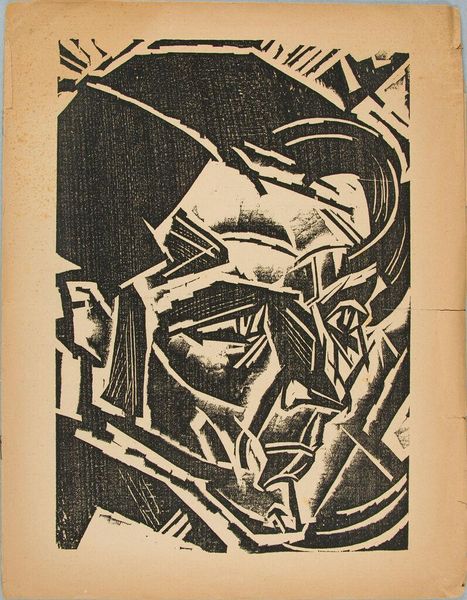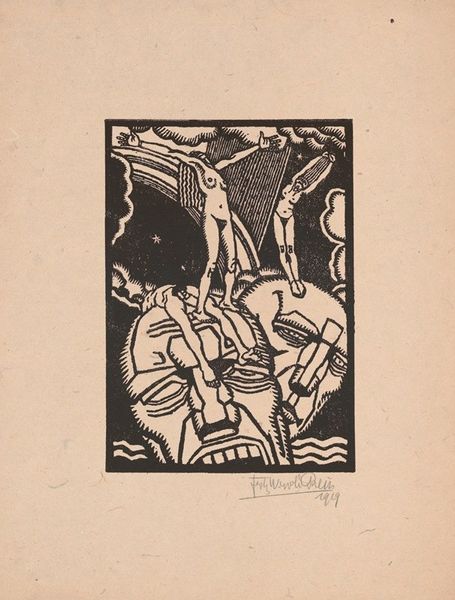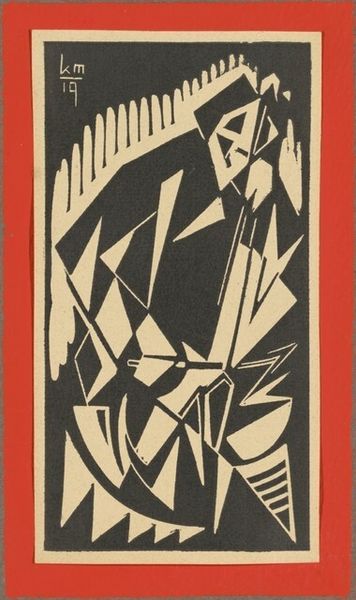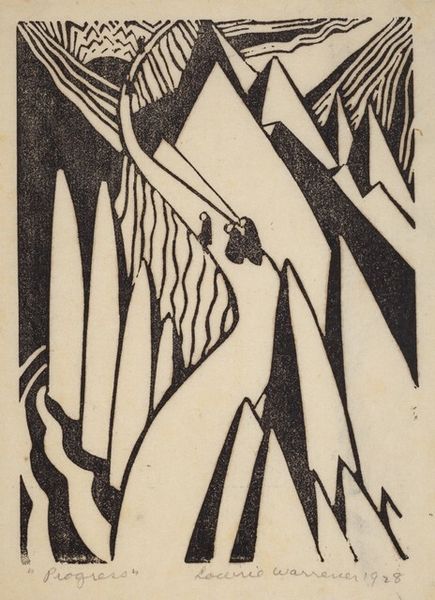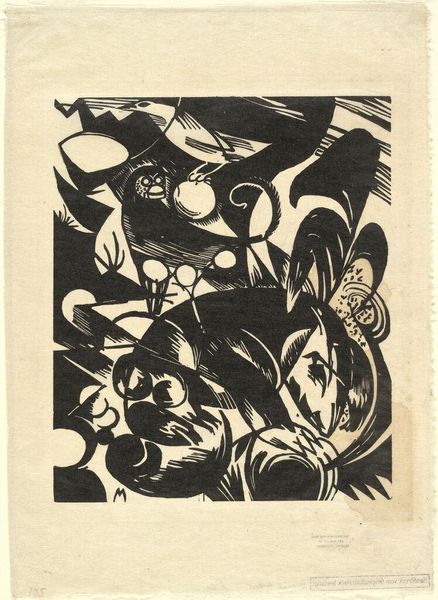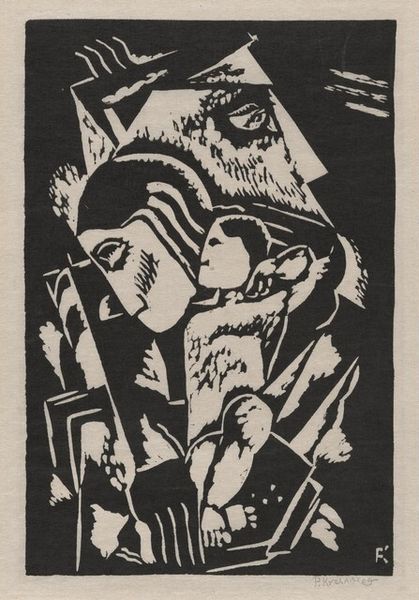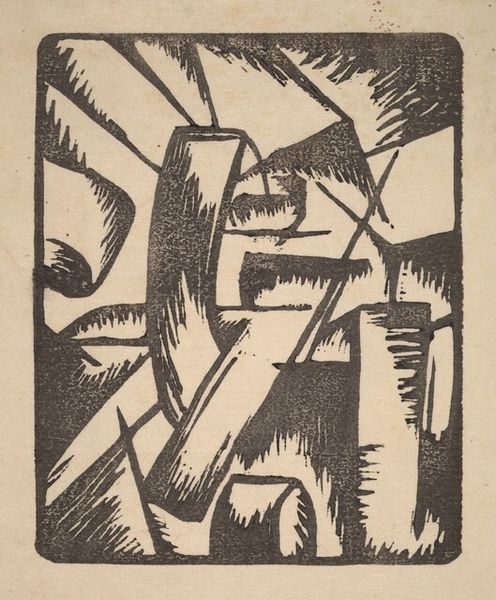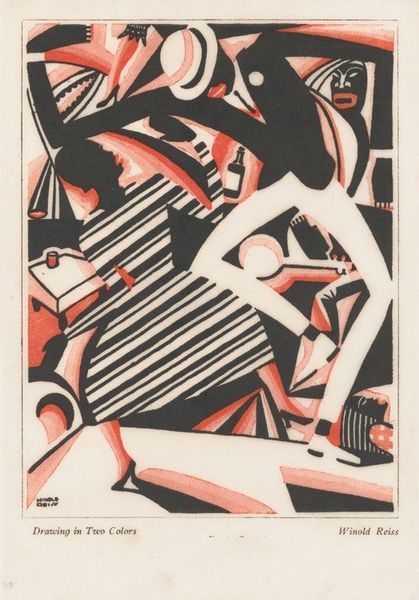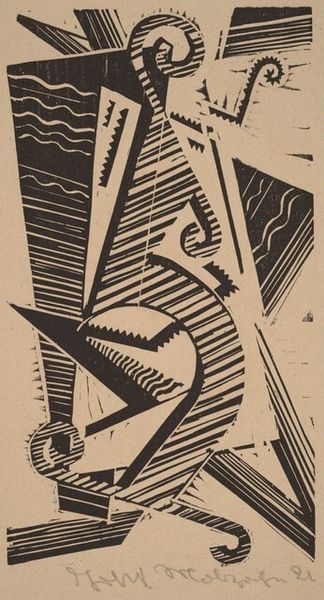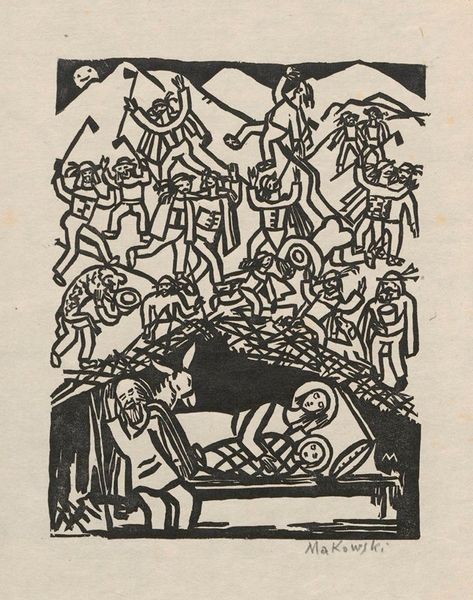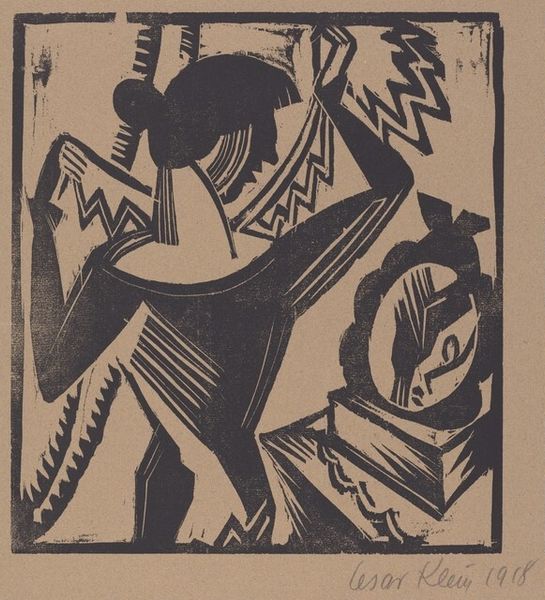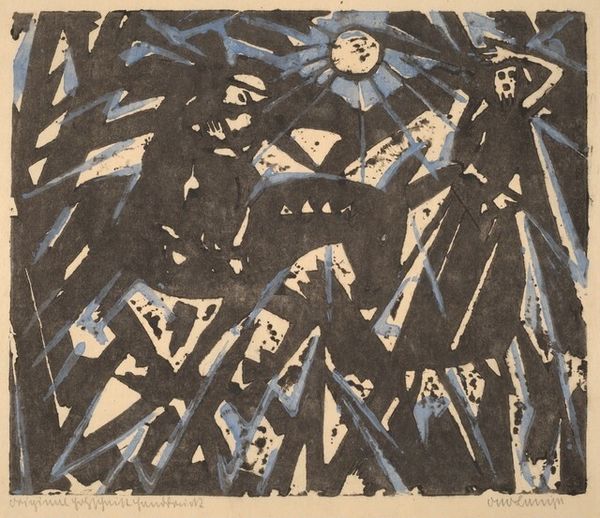
Dimensions: block: 22.2 x 16.8 cm (8 3/4 x 6 5/8 in.) page: 31.9 x 24.8 cm (12 9/16 x 9 3/4 in.)
Copyright: CC0 1.0
Curator: Here we have Fritz Schaefler's woodcut, "Horse," published in January 1919 in "Der Weg 1". The strong black and white contrasts give it a striking, almost tormented feel, wouldn't you agree? Editor: Absolutely. The fragmentation and sharp angles definitely convey a sense of unease and internal struggle. The piece comes from a volatile period in Germany, and Schaefler, like many Expressionists, grappled with themes of alienation and societal breakdown. Curator: I see that reflected in the angularity of the horse's form, and the almost brutal simplicity of the linework. It’s as if the animal is being dissected before our eyes, mirroring the fractured state of the world around the artist. Editor: Precisely! We can’t ignore the poem printed alongside the image, by Alfred Wolfenstein, which speaks of the horse's painful existence, confined and whipped onward. It adds a layer of social commentary on exploitation and the dehumanizing effects of industrialization. Curator: It really makes you consider the role of the artist in times of upheaval, doesn't it? Schaefler uses the horse, traditionally a symbol of power, to express vulnerability and the loss of innocence. Editor: A sobering reflection on a world in transition, urging us to confront difficult truths about power and oppression.
Comments
No comments
Be the first to comment and join the conversation on the ultimate creative platform.
